Contact UsCONTACT
Please feel free to contact us if you have any questions or concerns.
Inquiry FormStories
STORIES
SERIES EMBARK
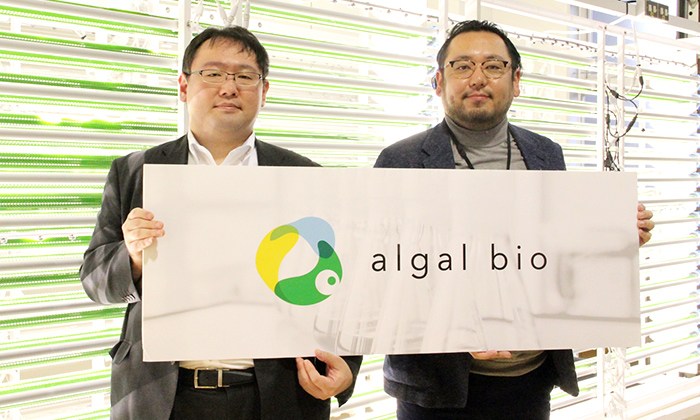
Algae have potential in a variety of fields, including functional ingredients for food and cosmetics, alternative proteins, and biofuels. It is said that there are hundreds of thousands of species of algae, but only about 30 species are being industrialized for use in foods, biofuels, and other applications. AlgalBio, a venture company launched by the University of Tokyo, was founded in 2018 with the mission of "giving shape" to the potential of algae. Based on a variety of algae strains inherited from the university's research assets, the company has built a unique "biofoundry-type algae development platform," provides technical guidance to companies entering the business, and conducts contract research on algae. We asked Tsuyoshi Takeshita, the company's founder and Chief Scientific Officer (CSO), and Amane Kimura, who assumed the position of CEO in 2021, about the background of their start-up, their business model, and their vision for the future of the algae business. (Interviewer: Katsuyoshi Masuda)
At university and graduate school, I majored in applied chemistry, but I began to have a desire to advance to research in the field of biotechnology, so I re-applied to the graduate school of the University of Tokyo so that I could conduct research similar to that of biology. At that time, bioenergy began to attract attention due to energy supply and demand issues, and I wondered if I could make use of my knowledge of chemistry and biology, which I had majored in, and entered the laboratory of Professor Shigeyuki Kono (currently Professor Emeritus of The University of Tokyo) in the Department of Plant Survival Systems, Graduate School of Frontier Sciences, The University of Tokyo. There, I first encountered algae, and in the course of conducting research on biofuels, I became convinced that algae were an organism with tremendous potential.
In the course of my research, I discovered that chlorella, a type of algae, contains a large amount of carotenoids, which are useful substances, and using this as a starting point, I examined various algae strains and culture conditions and discovered seven-color chlorella. The opportunity to work as an inventor on two patents through the cultivation and breeding technology that I had developed led me to consider starting my own business. While I thought that it would be difficult to bring the results of my research to a company and continue my research, I also thought that I could stay at the university and continue my research, but it would not lead to a business. I started the venture with the hope that I could continue my research in a venture setting and make it my business to introduce algae that can produce high value-added substances to the world.
Professor Hideaki Miyashita of Kyoto University's Graduate School of Human and Environmental Studies, who was a co-inventor in the research that led to the patent, encouraged us to start the company, and we also received investment from Kyoto-iCAP. Professor Miyashita continues to serve as a technical advisor.
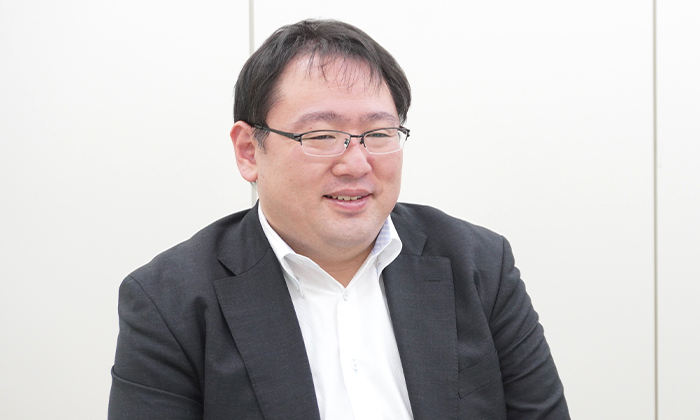
At Mitsui, I spent about 5 years in a department that was set up with the mission of providing a stable supply of food for a global population of 10 billion people through the value chain under the theme of "Food and Agriculture". In addition, since 2015, I have been involved in the business of investing in innovations in the field of food tech, due to the need to achieve a more sustainable food supply. One of our investments was in the alternative protein business, and we were also looking at the use of algae from the investment side. That experience also sparked my interest in AlgalBio.
The members of that food tech venture were struggling daily to create a new world with faith, despite the risks involved in not knowing how far their business would blossom. I was extremely impressed and envious of their efforts. Although I might be able to take on challenges with the same enthusiasm inside Mitsui, I sometimes felt that in order to make a more direct impact of myself on business creation, I would have to go out into the venture scene to make it happen. In addition, seeing their venture grow at a fast pace and achieve an IPO, I felt close to the potential of algae and thought that industrialization would progress faster than I had imagined, which encouraged me to make the change.
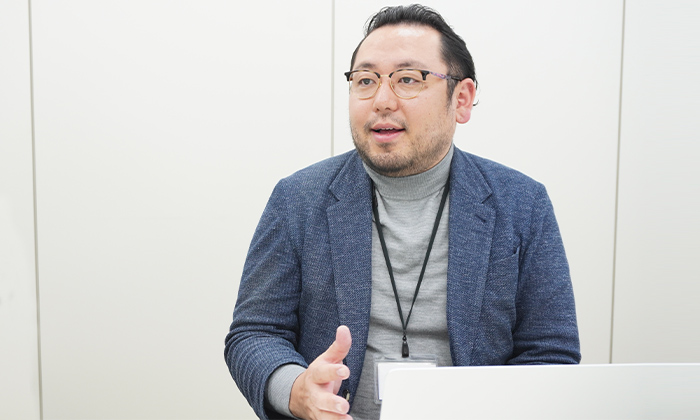
While gathering information at on-campus seminars on entrepreneurship and intellectual property, he was introduced to the University of Tokyo Edge Capital Partners (UTEC), which invests in technology transfer-related businesses, and drew up his first plan for starting a business, albeit a poorly written one. He was also selected by the Japan Science and Technology Agency (JST) to participate in the START Program for the Creation of New Industry from Universities, where he conducted market research, hypothesis testing, and other activities over a two-year period. At the same time as the program ended, Dr. Kono retired and his laboratory was closed, but he continued his research for another year while receiving funding from UTEC and preparing to start his own business. Although we had considered starting a business when the laboratory closed, we felt that the time was not yet right. I think it was a year to make us aware of the need to create a business, not just an extension of the university.
When it came time to establish a company, I had never belonged to a corporate organization and did not know how to form a company. I consulted with the then incubation manager of the Todai Kashiwa Venture Plaza (Small and Medium Enterprise Corporation), where the institute was established, and was introduced to a certified public accountant and an administrative scrivener, and was able to establish the company within about a month. I realized that although there are many entrepreneurship support programs available these days, most of them only provide assistance after the start-up of a business, and there is no system that teaches the specifics of how to create a company before that.
While I wanted to continue my own research after the founding of the company, I was under pressure to establish a business and generate revenue. While it would be possible to provide services while conducting research in collaboration with corporate researchers and others, I had no experience in selling products and commercializing them, and I came to believe that I should leave this to experts. We also received investment from Kyoto-iCAP and others at the end of 2019, and one of the investment requirements was to recruit and enroll management candidates. we met with over 100 candidates and decided to hire Kimura as COO in the summer of 2020 and to appoint him as President and CEO the following year.
When I applied for the position, I did not know that the position was open with an eye toward management. The fact is that I joined the company because Takeshita told me that he wanted me to look at the business side of things because he was neck-deep in the two-footed job of being a researcher and a manager. When I actually joined the company, I found that Takeshita did indeed appear to be in a head-crunching situation. I started by visualizing the issues facing the organization, and to be honest, I was surprised when I was asked to become CEO. In talking with Takeshita and the investors, I accepted the position because I thought that the phases of the company organization needed to change in the process of industrializing the potential of algae, and I wanted to make the most of my career and devote myself to it.
Our greatest feature and strength is that we possess a diverse array of algae strains that we have inherited from university research assets. This "algae library" has a variety of characteristics, including wild strains that exist in the natural environment, characteristic strains created through university breeding (breed improvement), and strains established in-house on our own. We have the technology to select (screen) and cultivate the most suitable strains of algae for each application and purpose from among many strains of algae, including Chlorella.
The business model is the establishment of both a joint development model and an in-house development model. In the joint development model, we support our client companies in commercializing algae as they pursue, for example, health food and supplement businesses. It is a market-in type business model in which algae strains are selected to suit the intended use and target product, and are then used to create a product. On the other hand, we are working on the commercialization of algae supplements and other products under the in-house development model. The objective of the joint development model is to expand the base of algae utilization and create a society in which algae can play an active role, while the in-house development model aims to make people aware of the potential of algae and its potential.
The advantage of the joint development model is that by teaming up with product commercialization specialists in each field, we can promote the industrialization of algae by bringing together our mutual strengths. The self-development model allows us to shape the potential of algae with our own will and speed. We believe that the in-house development model is also an essential business model for our company, as the joint development business is subject to confidentiality agreements, which make it difficult to publicize our specific core competencies and achievements to the outside world.
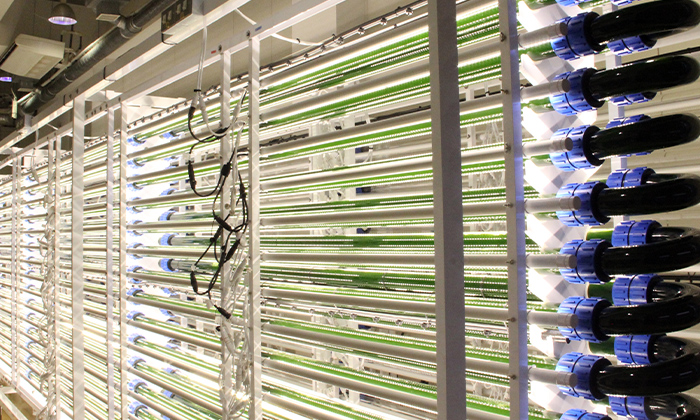
We live our lives surrounded by chemical products such as oil and natural gas. Our future goal is to build a world where algae is utilized in every aspect of our lives and social infrastructure. We plan to expand the use of algae in the fields of energy, environment, and materials, including small-volume, high-value-added functional foods and cosmetics, then food, and finally biofuels and bioplastics, using both the joint development model and the in-house development model. AlgalBio aims to become a platform for algae development to realize this goal.
I started my own business from a science laboratory called the Plant Survival Systems Field. I think that entrepreneurship utilizing the research results of researchers in biological fields such as plants and animals can be one career path for researchers. There can be a methodology for graduate students and postdoctoral fellows to develop their research while aiming for commercialization, and I hope that more people will take up the challenge.
From my experience working in the U.S., I feel that the entrepreneurial spirit is overwhelmingly underdeveloped in Japan. Even if there is a good support system for venture businesses, it is meaningless if Japanese people do not have more entrepreneurial spirit. Whether you come from a research background or, as I did, have come from a large company, I would like you to take a more casual approach to entrepreneurship, rather than treating it as a once-in-a-lifetime decision, as I did.
(Interviewed in January 2023. Affiliations, positions, etc. are as of the time of the interview)
Biofoundry, which utilizes microorganisms to produce various useful substances, is one of the new technologies that are now attracting the most attention from an ESG perspective. AlgalBio aims to be an algae biofoundry company among them. Mr. Takeshita, who was the founding researcher and first president of the company, had always wanted to focus on research and development. However, I was surprised when he actually realized this and handed the position of representative director to Mr. Kimura once and for all. Under the Kimura-Takeshita structure, AlgarBio is now on a growth curve.
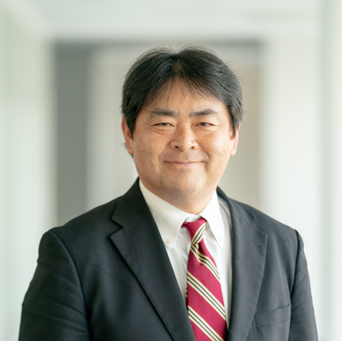
Osami Kono

Algal Bio Co., Ltd. website
Please feel free to contact us if you have any questions or concerns.
Inquiry Form